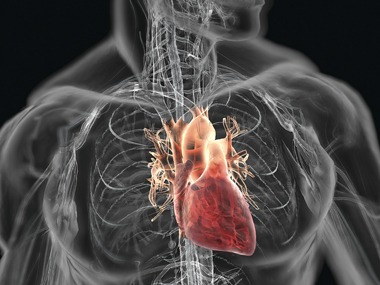
These four surprising clues can point to clogged arteries and underlying heart disease, according to Joel K. Kahn, MD.
Preventing heart disease in patients is my main goal, but early detection is the next best thing. This can lead to changes in lifestyle and medical therapies that can delay or deny the onset of a heart attack; almost 80 percent of heart disease is preventable with lifestyle changes. Many of my patients are shocked to learn about the following clues to underlying heart disease.
1. Erectile dysfunction (ED) could mean clogged arteries.
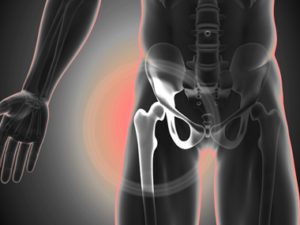
Men have a built-in warning system for silent CHD. When achieving an erection is difficult or impossible, it can be a sign of clogged arteries in the pelvis that presents before a heart attack hits. There are, on average, three to five years between the onset of ED and the finding of CHD, which is plenty of time to detect and to work on preventing heart issues. If you and your partner are worried about sexual performance, look for and treat root causes of diseased arteries before just popping a blue pill.
2. Baldness could indicate clogged arteries.
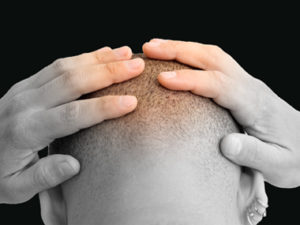
In a comprehensive new study of almost 37,000 men, severe baldness at the crown of the head strongly predicted the presence of silent CHD at any age. In a separate study of more than 7,000 people (including over 4,000 women), moderate to severe baldness doubled the risk of dying from heart disease in both sexes.
3. Ear crease might indicate clogged arteries.
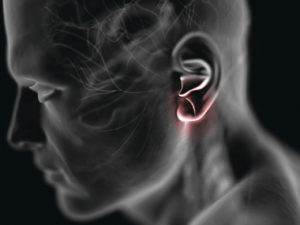
One of the stranger markers, a crease in your earlobe (specifically, an angled crease in the ear that runs diagonally from the canal to the lower edge of the earlobe) has been mentioned in medical research reports as a sign of silent CHD for decades. The ear crease may result from poor circulation, including in arteries in the heart. Although some medical professionals have argued that a crease is just a general sign of aging, researchers last year used the most sophisticated CT scan method to measure silent CHD and found that ear crease predicted heart disease even after the authors accounted for other risk factors, such as age and smoking.
4. Calf pain when you walk might mean clogged arteries.
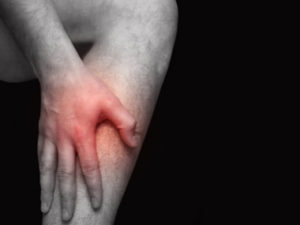
This is known as claudication (from the Latin for “to limp”). Atherosclerosis can block leg arteries, particularly in smokers, before CHD is diagnosed. This symptom requires an evaluation without delay. Your doctor will examine the pulses in your legs and perform simple measurements of leg blood pressure and blood flow to confirm a diagnosis of poor circulation. It is critical that heart disease be diagnosed as early as possible because there are many dietary and medical treatments that can help reverse the issue. Some of my patients took these early clues to heart. I advised them to eat more plant-based foods and fewer animal products and to start a walking program. Their calf pain completely resolved within weeks and has not recurred for years. Anyone with any of the above signs of silent CHD should know his or her numbers (blood pressure, cholesterol, fasting glucose). Ask your doctor if you should be checked for heart disease with an EKG, a coronary calcium CT imaging, or an exercise stress testing. To borrow from Ben Franklin, an ounce of prevention (plus a bowl of kale) is worth a pound of cure.
The Best Foods to Eat to Avoid Clogged Arteries
1. First: Break up with soda

An astounding 180,000 people die each year, worldwide, due to the consumption of sugary drinks, and about 45,000 of those deaths are from heart attacks. Heart disease might set in because people who drink many soft drinks tend to gain weight, become diabetic, and suffer premature heart blockages. Soft drinks also elevate blood sugars, which coat proteins and fats, rendering them into a harmful form that damages your arteries. Harvard researchers, who have been studying more than 40,000 physicians and 88,000 nurses for more than two decades, found that women who consumed more that two servings of a sugary beverage a day were 40 percent more likely to develop heart disease than women who drank fewer. Men who drank the most sodas were 20 percent more likely to have a heart attack than those who drank the least.
Power Rx: Give up soda. If you drink several a day, be realistic. Start by swapping one for iced tea. Or water it down by mixing half a glass with seltzer. Over time, drink less and less soda until you get to zero.
2. Veggies

Nearly everything you could possibly buy in the produce section of your grocery store is true medicine to the body. Plant foods are rich in vitamins, minerals, fiber, and special phytonutrients, all of which are good for the heart. Asparagus, bell peppers, and bok choy, for example, are rich sources of B vitamins, especially vitamin B6, which helps lower homocysteine (an amino acid linked to heart disease) and C-reactive protein (a marker of inflammation). Carrots and tomatoes (as well as the fruits oranges and bananas are rich in carotenoids including lycopene, an important antioxidant. It’s no wonder that the Harvard Nurses’ Healthy Study and Health Professionals Follow-Up Study found that people who ate 8 or more servings were 30 percent less likely to have a heart attack or stroke than people who consumed 1½ servings or fewer.
Power Rx: Eat one more serving of fruits and vegetables than you had yesterday, and keep this up for a week. Next week, add another serving. Keep doing this until you’ve surpassed five. Ideally, keep going until you hit somewhere between eight and 12 servings.
3. Leafy greens

Arugula, lettuce, beets, kale, spinach, and some other veggies are all rich sources of nitrates, a form of nitrogen they absorb from the soil. During digestion, that compound is converted into an important gas: nitric oxide, which makes arteries resist contraction, plaque, and blood coagulation, so strokes and heart attacks can’t occur. Researchers at Queen Mary University of London recently found that those who consumed a nitrate-rich meal—such as a bowl of lettuce—experienced an 11.2-mmHg drop in blood pressure within just a few hours, a reduction that lasted all day long. This important improvement in blood pressure rivals the best of powerful and widely prescribed drugs.
Power Rx: Add greens to everything (soups, sandwiches, smoothies, and whatever else you can think of), or try a glass of beet juice every day
4. Spices and herbs
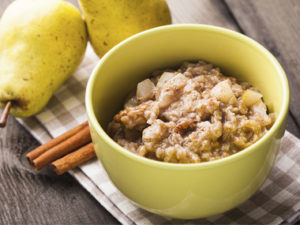
One of the easiest ways to protect your heart is also the tastiest. Many herbs and spices are medicine for the body. They are concentrate from plants, so they contain the same protective chemicals that plants use to ward off pests and disease. When we consume these chemicals from spices, they protect the cells in our body from disease too.
The allium in garlic has been shown to improve blood cholesterol, reduce blood pressure, and lower the risk of developing heart disease. Turmeric is rich in curcumin, which has been shown to reduce cholesterol, triglycerides, and blood sugar. Ginger is a natural anti-inflammatory herb that has been shown to thin the blood. The sweet spice cinnamon may improve blood flow and help normalize blood sugar.
Power Rx: Sprinkle apple pie spice (which contains cinnamon, along with cloves, allspice, and nutmeg) on fruit, oatmeal, and even your morning cup of joe. Add Italian seasoning mix onto salads, into soups, and onto potatoes and other side dishes.
5. Meat that’s as “naked” as possible

I gave up meat many years ago, and I’d love if everyone did the same. That said, I know the idea of forgoing animal products sounds like a steep change for many. A great first step: Make sure the meat you do eat is as naked as possible. I mean meat that contains no antibiotics, hormones, sodium, artificial colors, nitrites, pesticides, or hidden additives. If you buy meat at the supermarket, you can look for labels like “hormone and antibiotic free.” You also want to buy meat that comes from animals that dined on grass or other natural food sources, not from those that consumed grain from a feedlot. Meat from grass-fed animals has more healthy omega-3 fatty acids.
Power Rx: Always consume vegetables or fruit with any type of meat. The healing plant chemicals might buffer some of the harmful effects of meat. Make the vegetables and fruits the biggest portion of your dinner plate, and meat the garnish.
6. Fish
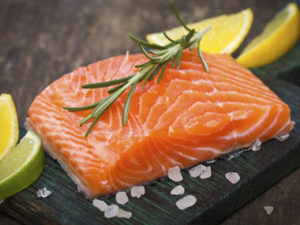
Certain types of fish account for your richest source of omega-3 fatty acids, which are known to reduce inflammation, heart rhythm disturbances, triglyceride levels, and high blood pressure. Diets rich in this fat might prevent plaque from building up in your arteries. These fish are easy to remember with this SMASH acronym: sardines, mackerel, anchovies, salmon, and herring.
Power Rx: Stick to eating fish twice a week, particularly of large fish like swordfish that have a high concentration of mercury.
7. Tea

This beverage is a rich source of plant substances, called flavonoids, that help neutralize oxidation in the body. Particular flavonoids in green tea, called catechins, protect our cells much like a premium gas additive keeps your car engine humming. Black, green, and oolong teas all halt heart disease in several ways, including blocking dietary cholesterol from being absorbed into the bloodstream, regulating levels of blood sugar, and soothing inflammation.
Power Rx: Drink one more cup daily than you already are. (If you don’t sip any, start with one cup). If you’re already a tea drinker, aim for three cups a day—one with each meal. Let it steep for three to five minutes to boost the amount of catechins.

No comments:
Post a Comment